Taqiyah vs Kippah vs Zucchetto, it's not so much a debate as an interesting comparison.…
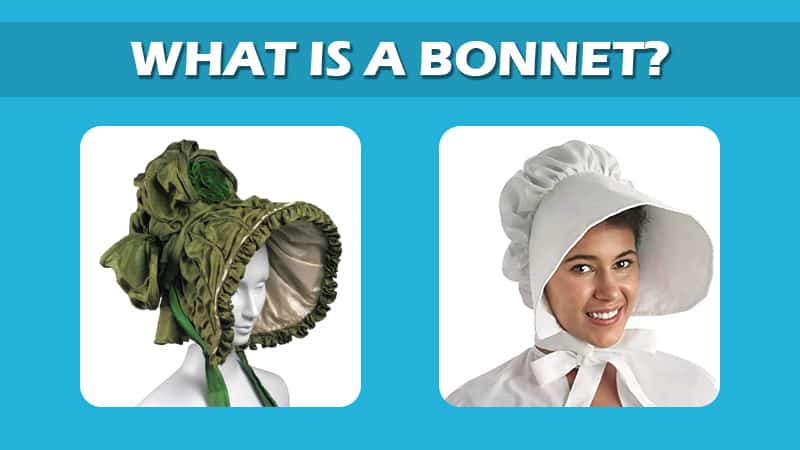
What is a Bonnet (headwear) – 20 Things You Should Know
Bonnets were once very popular. They soon went from simple head covers that served a purpose to stylish caps that had no purpose other than looking fashionable. But then they went out of fashion.
Some bonnets made it into the 21st century. However, these modern bonnets are very different from their traditional counterparts. Today the only bonnets you’ll see are overnight bonnets and baby bonnets.
Here’s all you need to know about bonnets.
1. What is a bonnet?
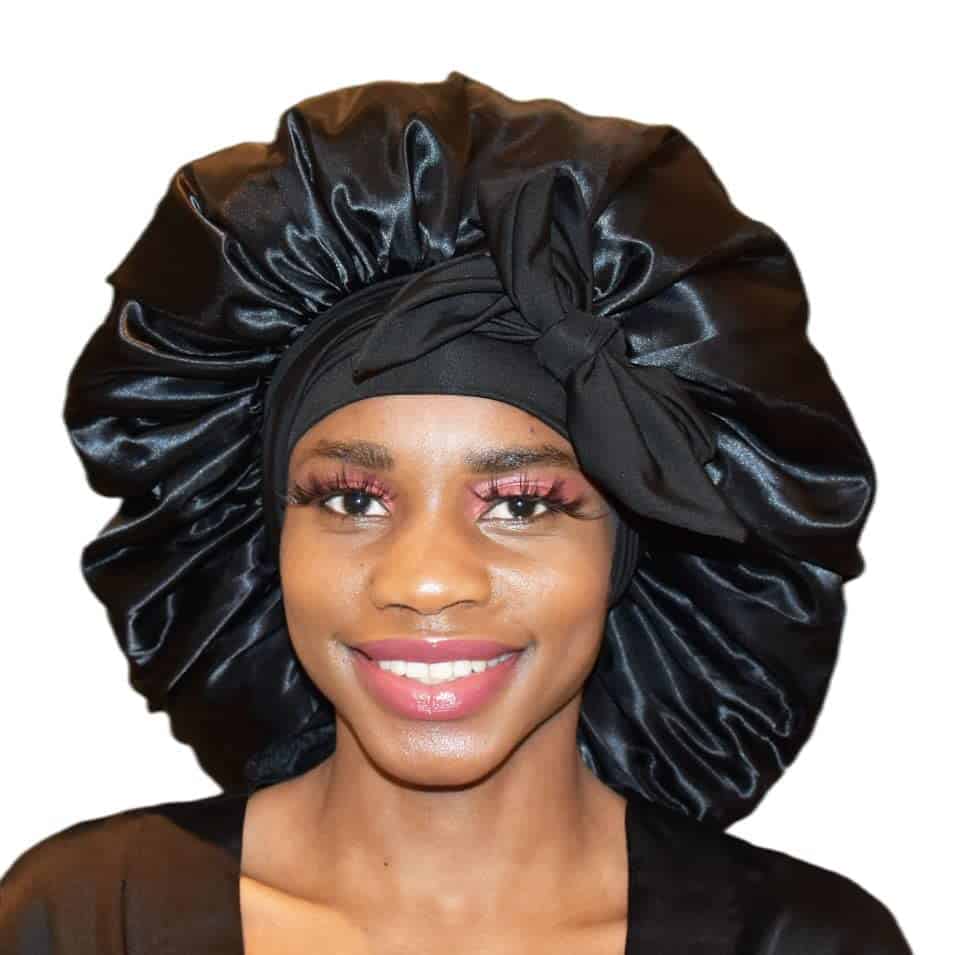
A bonnet is a hat made with fabric. Original bonnets had ribbons to tie under the chin and hold the cap in place. The earliest bonnets were brimless, but later on, bonnets had brims on the front for extra protection and privacy.
Bonnets evolved a lot through the ages.
Now, old-fashioned bonnets are nowhere to be seen. But modern bonnets are still doing well. These are fabric caps made with either satin or silk and usually worn at night. They come with elastic bands or adjustable drawstrings to secure them.
2. Other names for bonnet
Today, there are so many terms for a bonnet. Some of these are cap, capote, hood, headdress, coronet, and chapeau.
The word bonnet originated from the old French word bonet meaning head covering.
3. A brief history of bonnet
Bonnets have a very long and interesting history that goes as far as the Middle ages.
These head covering became very prominent in the 17th and 18th centuries when women wore them for protection and modesty.
By the 19th century, almost all women wore bonnets, and bonnets soon became a mark of style and elegance.
However, by the 20th century, hats, caps, and umbrellas overtook bonnets.
Here’s the complete history of bonnets.
4. What are the purposes of a bonnet?
The purpose of the bonnet evolved through the ages.
The primary purpose of traditional bonnets was to safeguard the wearer from rain, wind, sun, dust, and other contaminants. Old bonnets also served the purpose of adding modesty to a woman’s attire. Covering the face and hair was a sign of elegance in older days.
Today, however, bonnets serve a different purpose. The main goal of today’s bonnets is hair care. This includes:
- Maintaining hairstyle during sleep.
- Reducing frizz, tangles, breakage, and split ends.
- Protecting the pillowcases and bedcovers from hair masks and treatments.
- Keeping hair away from the face during sleep.
5. What is the difference between a bonnet and a durag?
Both bonnets and durags are head covers made from satin or silk, covering and shielding the hair. But durags are tight fitting and better for maintaining compact hairstyles. Bonnets are not tight fitting. They allow hair to move about freely while retaining moisture and preventing tangles.
Durags also look very different from bonnets. Durags have a long fabric piece covering the neck that ties at the back of the head.
Another difference is that durags are considered trendier, and you’ll see people wearing them outdoors, but bonnets are more of a sleep-time hair accessory.
6. What does a bonnet do to hair?
Today bonnets are a primary accessory in hair care. These bonnets are made with satin or silk and guard the hair in various ways.
- Reduces tangles, frizz, and split ends. Bonnets reduce the friction between your hair and the pillowcase. Lower friction minimizes frizz, knots, and split ends. The result is that you wake up with tangle-free, neat hair.
- A bonnet keeps your hair moisturized during sleep. Bonnets are made with either silk or satin. These are smooth, non-absorbent fabrics and don’t absorb moisture and oil from your hair. This leaves your hair hydrated and prevents it from drying out.
7. Are bonnet bad for your hairline?
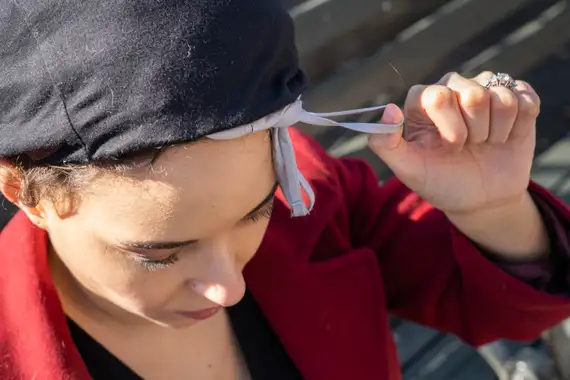
A very tight bonnet is undoubtedly bad for your hairline. The edges of the bonnets will rub against your hairline throughout the night. This rubbing will cause hair damage and even hair loss.
But don’t let this put you off from using a bonnet. The ideal bonnet can do wonders for your hair.
Avoid bonnets with elastic or cotton bands if you are worried about a receding hairline. These bonnets have harsh edges that can indeed rub with your hair and damage the hair cuticles.
A good option is to pick a bonnet with a drawstring. These bonnets are adjustable, and you can fit them snugly without them becoming too tight.
8. Can you put a bonnet on wet hair?
Yes, you can, but you have to be extra careful. Hair is fragile when wet, and even a tiny mistake can damage your precious strands.
Firstly, your hair must be damp and not completely wet. Sleeping with wet hair can cause breakage, and the moisture can even give you a cold or scalp infection. You can blow dry your hair for a few minutes, blot it with a towel, or even let it air dry.
Once your hair is damp, you can apply a hair care product and put on your bonnet.
9. Can you sleep with a bonnet?
Yes, you can sleep with a bonnet. Almost all bonnets you see nowadays are overnight bonnets. These bonnets are made for bedtime, and you are supposed to sleep with them.
You can cover your hair with the bonnet before bedtime and wake up with perfect hair.
10. What happens if you wear a bonnet for too long?
Keeping your hair covered with a bonnet for a long time can make your hair oily, and a bonnet locks in moisture, which is a pretty good thing at night. However, too much moisture is also harmful as it can cause your strands to become greasy and limp.
Healthy hair starts with a healthy scalp. Your scalp needs to be exposed to oxygen, and covering it for too long is unhealthy. Your hair follicles will get blocked with sebum and hair care products, impacting your hair growth. Covering your hair non-stop may also give you an itchy scalp or even scalp irritation.
So, make sure to give your hair plenty of breaks between wearing your bonnet.
11. Do bonnets protect from the sun?
Modern bonnets won’t protect you from the sun.
But traditional bonnets protected the wearer from the sun. Most traditional bonnets had brims on the front that shielded the face and hair.
12. Can you wear a bonnet in the winter?
Old-fashioned bonnets were made for all seasons. During winter, they kept cold wind away from the face and kept the face, head, and neck warm.
Modern bonnets, however, are a different story. You can wear a modern bonnet in winter, but don’t expect it to keep you warm.
Modern bonnets are sewed with light, cool materials like silk and satin. These fabrics keep your scalp cool during the night and won’t keep you warm during winter. However, you can wear your bonnet underneath your regular winter cap. This will keep your hair tangle free throughout the day.
13. Who made the bonnet a fashion statement?
Initially, bonnets weren’t made for fashion. And they wear a measure for shielding from harsh weather and protecting a woman’s modesty.
Bonnets became a fashion statement after women from elite families started wearing elegant bonnets to functions. These bonnets had frills and lace and were even adorned with ornaments. Soon, fashion designers came up with more and more intricate bonnet designs.
Only the wealthiest women from high social class could afford these elegant bonnets.
14. Could bonnets come back into style?
Frankly, there is very little chance of old-fashioned bonnets returning to style.
Various headwear has emerged throughout the years. Even if bonnets made a comeback, they’d have some fierce competition.
Stylish hats and caps are very prominent. There are straw hats for summer and beanies for winter, and bonnets will have difficulty fitting in.
15. Who should wear a bonnet?
Anyone can wear a bonnet. Back in the day, bonnets were mainly for ladies, but not anymore.
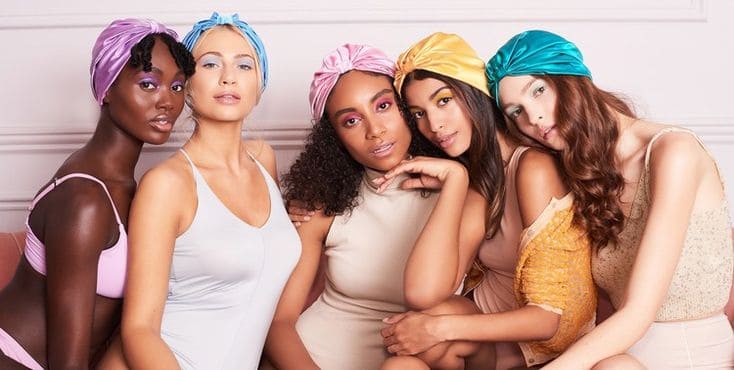
Nowadays, bonnets are mainly for keeping hair in place at night. This makes bonnets ideal for anyone with a good hair care routine.
Bonnets are also ideal for those who want to style their hair at night and reduce all the time spent on hair the following day. A bonnet will perfectly preserve your hairstyle until morning.
A night bonnet is also a must-have for those with curly, afro hair because their hair types tend to get very messy.
16. Do guys wear bonnets?
Yes, bonnets are usually associated with women, but that doesn’t mean a guy can’t try out a bonnet.
Bonnets will mainly benefit guys with long hairstyles like braids. But most men with long hair chose durags over bonnets to keep their hairstyle intact.
17. Can babies and kids wear bonnets?
Yes, there are specially designed bonnets for babies and kids. These are usually called baby bonnets. Baby bonnets are small caps that protect the head and face of a child. The bonnets come with a ribbon that you must tie under the chin.
Bonnets keep the babies warm and help in temperature regulation.
Baby bonnets are very common among infants and toddlers.
Both girls and boys can wear baby bonnets. However, older girls wear bonnets more often than boys.
18. Can you wear a bonnet in public?
Back when bonnets were famous, they were outdoor wear, but things have changed.
Most modern bonnets are created for indoor use. These simple bonnets are made for nighttime and don’t look good outdoors. However, there are some bonnets especially made for outdoor use. You can wear one of these if you want to protect your newly styled hair or if you are feeling extra fashionable.
19. Bonnet materials
Traditionally, women used fabrics like satin, silk, velvet, and wool to sew their bonnets. Silk was the most expensive fabric, so silk bonnets were only affordable to wealthy women. Some poor and middle-class women used any leftover fabric to make their bonnets.
High-quality bonnets had many adornments. These were decorated with intricate lace trimmings and ornaments. Sometimes women used cardboard to stiffen the brim for extra protection.
Some women even used straw to make their bonnets. Straw bonnets were light and comfortable and reserved for the summer.
Today, bonnets are mostly made of satin or silk. Both these materials are smooth, silky, and excellent at reducing friction between hair strands.
20. Which bonnet is the best?
1. Floppy brimmed bonnet
The floppy brimmed bonnet is a perfect accessory for any costume! It’s made of 100% polyester and comes in one size – it will fit most women. The material can be hand-washed, and don’t put this cute piece into your washing machine or dryer because its delicate construction might lead to shrinking when exposed too high temperatures.
- Product: Bonnet Costume Headwear
- Material: 100% polyester
- Size: one size
- Closure: pull-on closure
- Care Instructions: hand wash only
- For: women
- Colors: red, black or white
Final Thoughts
Bonnets are one of those fashion accessories that faded away with time.
Once, bonnets were the most popular head covers among women. They indicated social class, elegance, and modesty. But traditional bonnets couldn’t keep up with the fast-changing fashion world.
Only baby bonnets and overnight bonnets made it into the 21st century. Overnight bonnets are now vastly popular thanks to hairstylists and women all over the world who swear by their benefits.
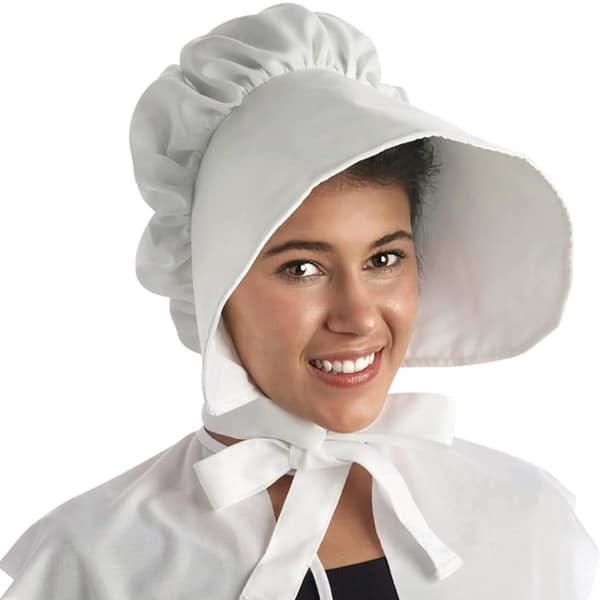
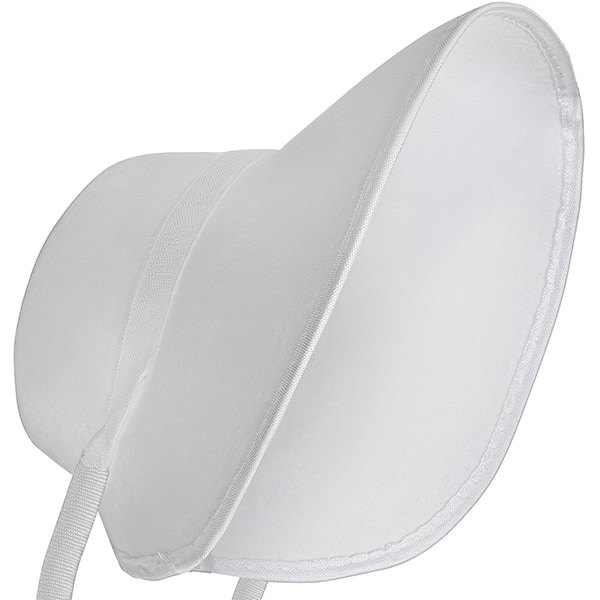
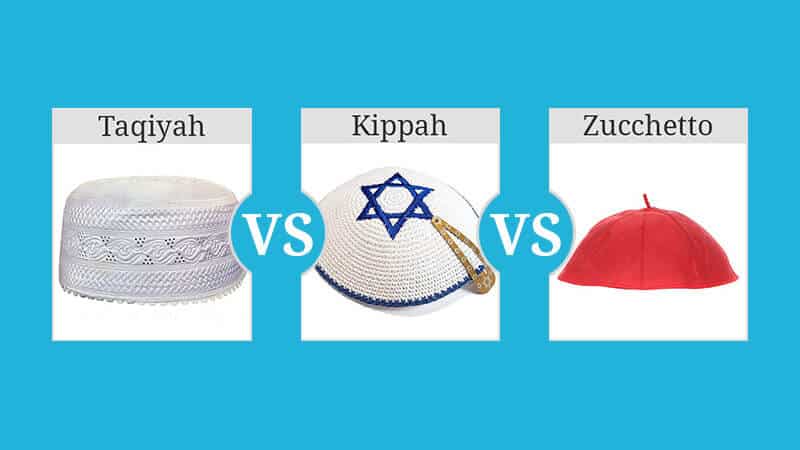
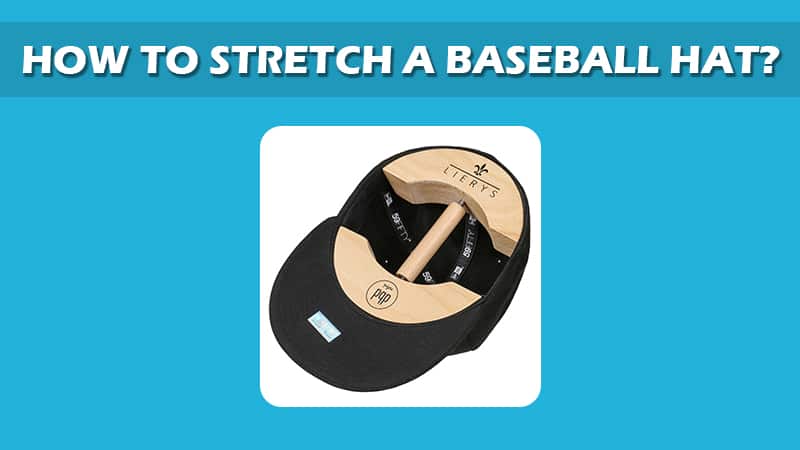
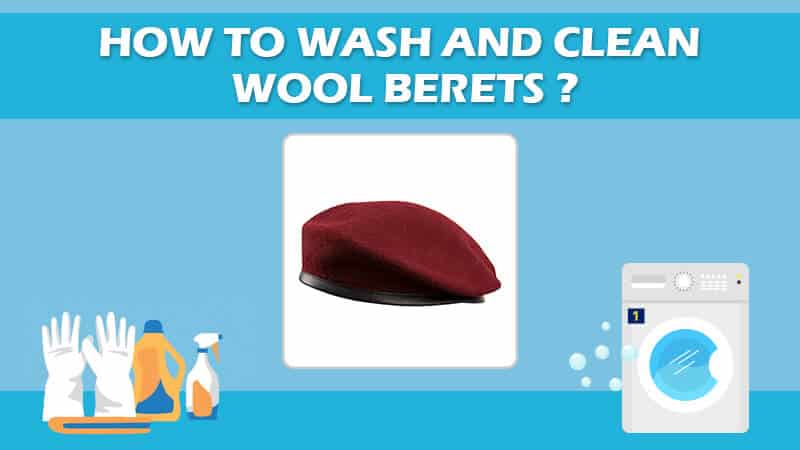
This Post Has 0 Comments